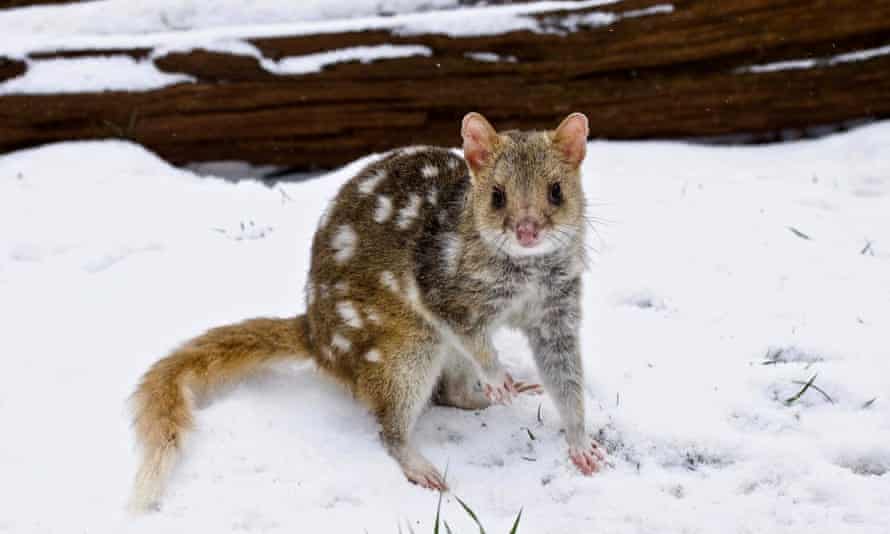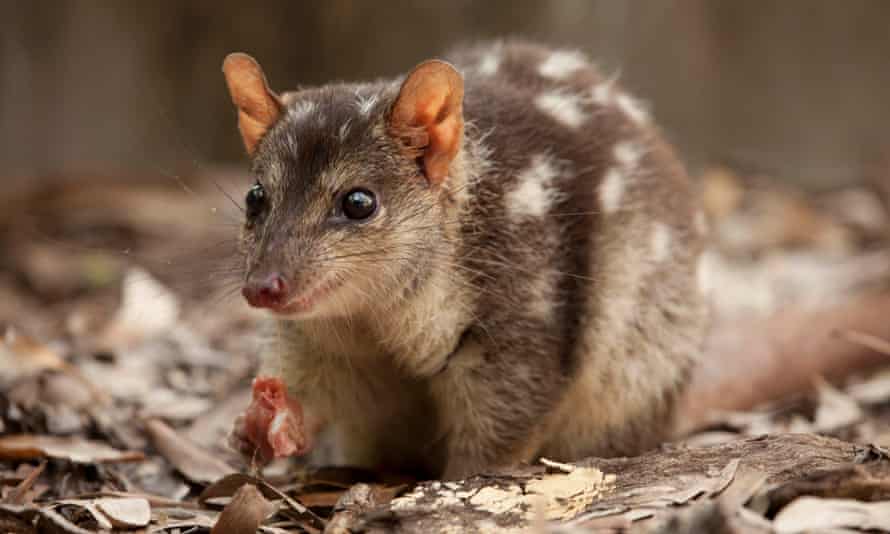Extract from The Guardian
For author Harry Saddler, a small Australian mammal has become the catalyst for larger questions about colonisation, parenthood and climate crisis.

Last modified on Wed 28 Jul 2021 03.31 AEST
All Harry Saddler really wanted to do was to see a quoll in the wild.
It was November 2019, and the Melbourne-based author was enjoying a surprise publishing success: his small book, The Eastern Curlew, a telling of the extraordinary migration of Australia’s largest shorebird, had sold through its hardcover print run, opening a new niche in Australia for natural history writing.
This was when Australia’s Black Summer bushfires were beginning to choke the eastern states, and before the pandemic that would force Saddler to write from home. It changed his focus. “It became impossible to write about the state of the environment in Australia and not confront those things head on,” he says.
Saddler’s new book, Questions Raised by Quolls, became more a work of moral philosophy than natural history. Written quickly, it became part treatise on the legacy of colonialism, part family history: Saddler’s ancestor Michael Farrell was transported as a convict to Sydney from Ireland in 1816.
“I think that aspect of the family story in the book was a way to write about the human effects of colonialism without co-opting other people’s stories,” Saddler says. “I touch on the damage done to Indigenous societies in the book too, but I was conscious that those are not my stories to tell.”

Another consequence of colonisation has been a wave of mammalian extinctions: 34 Australian species have been officially extirpated since European settlement. Eastern quolls disappeared from the forests of the mainland decades ago and are now confined to Tasmania; western, northern and spotted-tailed quolls are all threatened.
It helps that these predatory marsupials are charismatic animals. Saddler wonders briefly if he should have written about rodents instead: “They’re the unsung heroes of the Australian mammal fauna, and they’ve really copped the brunt in terms of mammal extinctions,” he muses. “But it might not have been as appealing.”
So, instead of paying tribute to rodents, Saddler writes about those doing the work on the ground to save them – quolls and much else besides – in sanctuaries like Mulligans Flat in Canberra and Arid Recovery Reserve in northern South Australia, where long-gone species are being reintroduced in fenced-off environments.
“All these places run on the smell of an oily rag, because there’s no money in conservation at all, and yet people are nonetheless doing incredible work to restore ecosystems as best they can to bring the animals back, and you can see tangible results in some places,” Saddler says.

Unfortunately, the pandemic confined Saddler to writing about these places from his desk. Somehow, it increased the urgency. “Being someone who’s prone to introspection at the best of times, I think it helped me look beyond the four walls of my house, because I was thinking about larger things, looking back into the past, and potentially into the future.”
Writing Questions Raised by Quolls enabled him to focus on hope, instead of submitting to grief.
“There
is an understandable urge to despair in terms of the environment [but]
there is still an enormous amount in the world to be saved. Yes, we’ve
lost an extraordinary amount, but we haven’t lost everything, and we
have to fight for everything that we have left,” he says.
A northern quoll, one of multiple threatened species of quoll. Photograph: University of Technology Sydney/PR IMAGE
It also raises ethical questions not often touched on by men. Saddler’s father instilled in him a love of bushwalking. Now in his early 40s, Saddler wishes he could pass on the knowledge he inherited to children of his own: “I get clucky when I see baby magpies begging for food,” he admits. (Saddler is currently single.)
But he worries about the world he would be bringing a child into. This is not, he says, a question of overpopulation: “I really strongly reject that argument, primarily because it presupposes that our systems and ways of living and organising society and our economy are just fixed and immutable and are never going to change.”
Saddler is more concerned with the question of raising a child on a planet that is literally burning up. But he prefers to imagine a more equitable world, where sustainability is possible – in which case the question of the Earth’s ultimate human-carrying capacity is less urgent.
It was with his own father that he saw his first eastern quoll, hiking in Tasmania nearly 20 years ago. Soon, he hopes, he may be able to see one again. “If you’re going to write a book about an animal, you should be able to see the animal, that’s half the fun of it,” he says. “At least I saw some eastern curlews writing The Eastern Curlew.”
No comments:
Post a Comment